Issue Archive
Table of Contents
EDITORIAL
Introduction to a review series on hematopoietic stem cells
Edited by Associate Editor John Crispino, this Review Series focuses on hematopoietic stem cell (HSC) biology, going beyond the work in murine HSC biology and emphasizing development and characterization of human HSCs. Expert authors in the field cover topics ranging from ontogeny to aging and leukemia transformation. We hope that these erudite articles will stimulate research that develops novel strategies to reverse the effects of aging, prevent malignant transformation, and enhance in vitro production of HSCs from pluripotent stem cells.
BLOOD COMMENTARIES
REVIEW SERIES
Human CD34+ hematopoietic stem cell hierarchy: how far are we with its delineation at the most primitive level?
Edited by Associate Editor John Crispino, this Review Series focuses on hematopoietic stem cell (HSC) biology, going beyond the work in murine HSC biology and emphasizing development and characterization of human HSCs. Expert authors in the field cover topics ranging from ontogeny to aging and leukemia transformation. We hope that these erudite articles will stimulate research that develops novel strategies to reverse the effects of aging, prevent malignant transformation, and enhance in vitro production of HSCs from pluripotent stem cells.
The genesis of human hematopoietic stem cells
Edited by Associate Editor John Crispino, this Review Series focuses on hematopoietic stem cell (HSC) biology, going beyond the work in murine HSC biology and emphasizing development and characterization of human HSCs. Expert authors in the field cover topics ranging from ontogeny to aging and leukemia transformation. We hope that these erudite articles will stimulate research that develops novel strategies to reverse the effects of aging, prevent malignant transformation, and enhance in vitro production of HSCs from pluripotent stem cells.
Hematopoietic stem cell aging and leukemia transformation
Edited by Associate Editor John Crispino, this Review Series focuses on hematopoietic stem cell (HSC) biology, going beyond the work in murine HSC biology and emphasizing development and characterization of human HSCs. Expert authors in the field cover topics ranging from ontogeny to aging and leukemia transformation. We hope that these erudite articles will stimulate research that develops novel strategies to reverse the effects of aging, prevent malignant transformation, and enhance in vitro production of HSCs from pluripotent stem cells.
Resolving the hematopoietic stem cell state by linking functional and molecular assays
Edited by Associate Editor John Crispino, this Review Series focuses on hematopoietic stem cell (HSC) biology, going beyond the work in murine HSC biology and emphasizing development and characterization of human HSCs. Expert authors in the field cover topics ranging from ontogeny to aging and leukemia transformation. We hope that these erudite articles will stimulate research that develops novel strategies to reverse the effects of aging, prevent malignant transformation, and enhance in vitro production of HSCs from pluripotent stem cells.
CLINICAL TRIALS AND OBSERVATIONS
Interim PET-guided treatment for early-stage NLPHL: a subgroup analysis of the randomized GHSG HD16 and HD17 studies
Clinical Trials & Observations
Now recognized as an indolent B-cell lymphoma, nodular lymphocyte predominant Hodgkin lymphoma (NLPHL) poses a conundrum for patients and treating physicians: should treatment follow traditional Hodgkin lymphoma (HL) paradigms or those for management of lymphomas of similar cells of origin? Although they don’t answer this question, Eichenauer and colleagues provide compelling data from 2 prospective trials indicating outstanding patient outcomes with HL regimens for early stage NLPHL, with >90% 5-year progression-free and 100% overall survival. Importantly, the authors identify that consolidation radiotherapy appears necessary to achieve optimal disease control irrespective of interim positron emission tomography (PET) results.
LYMPHOID NEOPLASIA
Genetic subdivisions of follicular lymphoma defined by distinct coding and noncoding mutation patterns
Follicular lymphoma (FL) shares many genetic events with the germinal center–subtype of diffuse large B-cell lymphoma (DLBCL), and transformation to aggressive lymphoma is a preterminal event for many patients with FL. Dreval et al used whole genome sequencing, comparing FL cases with and without histological transformation, to elucidate transformation to DLBCL. The authors discovered 2 genetically distinct subgroups of FL: DLCBL-like FL (dFL) and constrained FL (cFL) that show a 10-year difference in time to transformation. cFL/dFL designation is an independent classifier that identifies high-risk patients, providing a new paradigm for mechanisms and risk for transformation.
MYELOID NEOPLASIA
Metabolic adaptation to tyrosine kinase inhibition in leukemia stem cells
Qiu and colleagues shed light on the metabolic changes that arise in a population of chronic myelogenous leukemia (CML) stem cells that allow them to better adapt to continued tyrosine kinase inhibitor (TKI) treatment. Exploiting a murine model and patient-derived xenografts, the authors show that hypoxia-inducible factor 1 (HIF-1) activation plays a critical role in this adaptation to TKI treatment by restricting oxidative phosphorylation and maintaining stem cell dormancy. Adding HIF-1 inhibition to TKI therapy is posited as a novel way to deplete persistent, quiescent CML stem cells.
PHAGOCYTES, GRANULOCYTES, AND MYELOPOIESIS
Infectious neutrophil deployment is regulated by resolvin D4
During severe infections, neutrophils are rapidly consumed, and production is urgently accelerated. Resolution of acute inflammation is thought to be an active process governed by the production of endogenous specialized proresolving lipid mediators, including the resolvin family. Using murine models of bacterial infection and single-cell mass cytometry, Libreros et al report that an increase in resolvin D4 disengages emergency granulopoiesis and limits excessive neutrophil accumulation at the inflamed site, promoting return to homeostasis following infection.
THROMBOSIS AND HEMOSTASIS
Mutations in atypical hemolytic uremic syndrome provide evidence for the role of calcium in complement factor I
Brief Report
Genetic variants identified in complement factor I (CFI) are pathogenic in ∼15% of patients with atypical hemolytic uremic syndrome. Using mutagenesis studies, Java and colleagues demonstrate that mutations at these sites that surround the calcium-binding sites cause defective protein synthesis with minimal or no secretion, suggesting that calcium is critical for CFI structure and function.
BLOOD WORK
-
Cover Image
Cover Image
![issue cover]()
Resolvin accelerates bone marrow macrophage efferocytosis of aged bone marrow neutrophils. The image shows confocal microscopy of bone marrow–derived macrophages (red, actin) with efferocytosis of ingested bone marrow aged neutrophils (green); the nucleus is stained with DAPI (blue). See the article by Libreros et al on page 589.
- PDF Icon Front MatterFront Matter
- PDF Icon Table of ContentsTable of Contents
- PDF Icon Editorial BoardEditorial Board
Advertisement intended for health care professionals
Email alerts
Advertisement intended for health care professionals


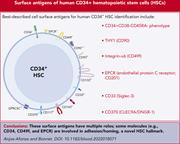
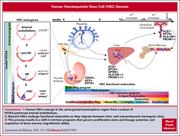
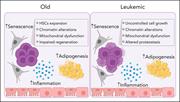
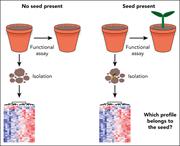
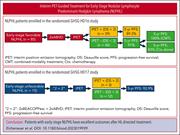
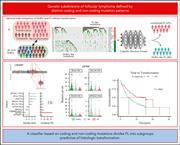
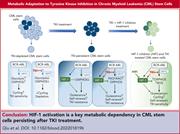

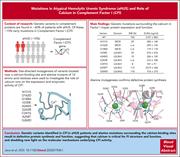

NLPHL: a hummingbird in an owl’s nest
Clinical Trials & Observations